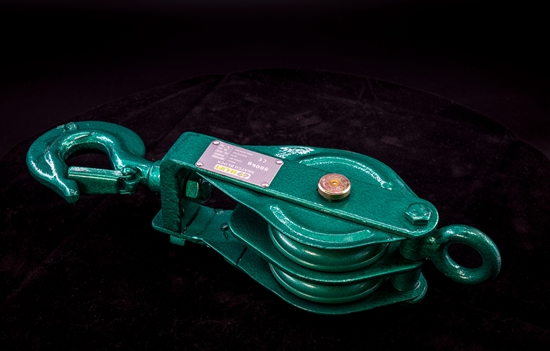A snatch block is a versatile pulley system used in various rigging and lifting applications to change the direction of a line, increase mechanical advantage, or perform complex lifting operations. It is a common tool in industries such as construction, forestry, recovery, and off-road vehicle operations.
The snatch block consists of a grooved wheel or pulley enclosed within a casing. The pulley's design allows the rope or cable to fit within the groove, reducing friction as it moves through the block. The casing often has a hinged opening, enabling easy placement of the rope or cable into the pulley.
Key features and uses of a snatch block include:
- Directional Change: The primary function of a snatch block is to change the direction of a line or cable. By passing the rope through the pulley, the load's direction can be altered, enabling more efficient and controlled pulling or lifting in various directions.
- Mechanical Advantage: When a line is run through a snatch block, it effectively creates a block and tackle system, providing a mechanical advantage. This allows for the application of less force on the pulling end while still achieving a significant increase in force on the load side.
- Load Sharing: Snatch blocks are commonly used to distribute the load between multiple lines or ropes, preventing overloading of a single line and ensuring a safer lifting operation.
- Recovery Operations: In off-road vehicle recovery situations, snatch blocks are often used to help change the direction of a winch cable, allowing the vehicle to be pulled out from challenging positions effectively.
- Rope Protection: The smooth and rounded surface of the pulley in a snatch block helps protect the rope or cable from sharp edges or abrasive surfaces, reducing wear and extending the life of the line.
- Versatility: Snatch blocks come in various sizes and configurations, making them suitable for a wide range of applications and load capacities.
When using a snatch block, it's essential to consider the load capacity of the block, the type and condition of the rope or cable being used, and the angle of the lines to ensure safe and efficient operations. Additionally, proper rigging techniques and understanding the principles of mechanical advantage are crucial for the successful and safe use of snatch blocks.



